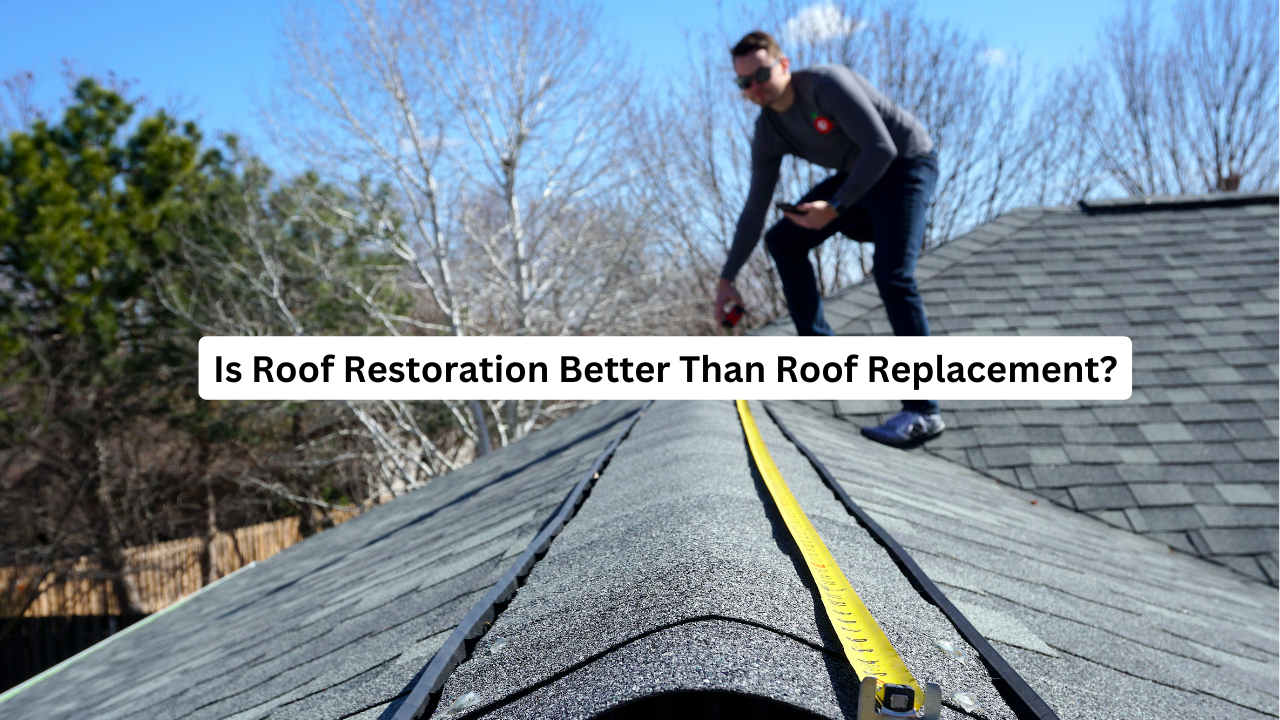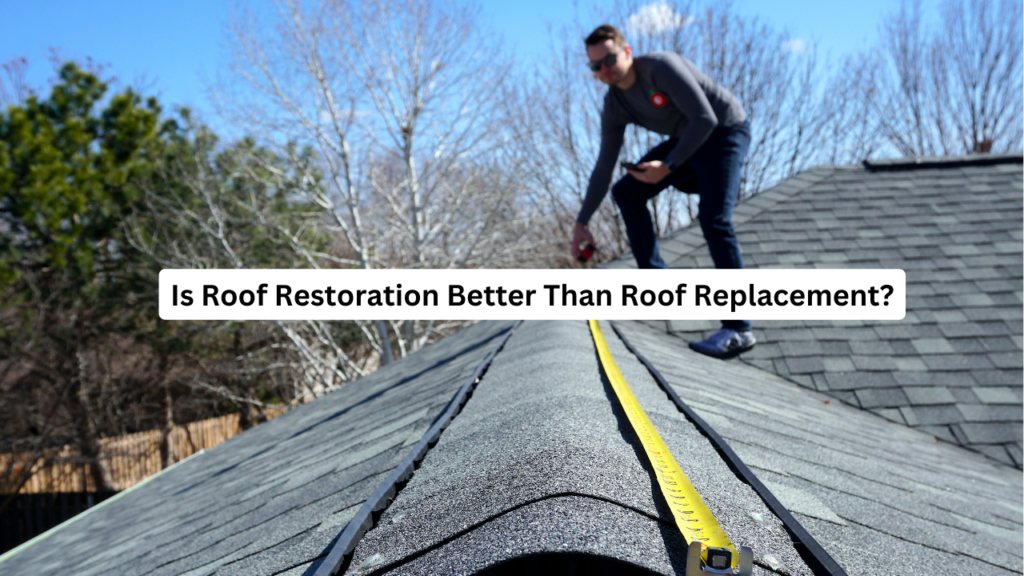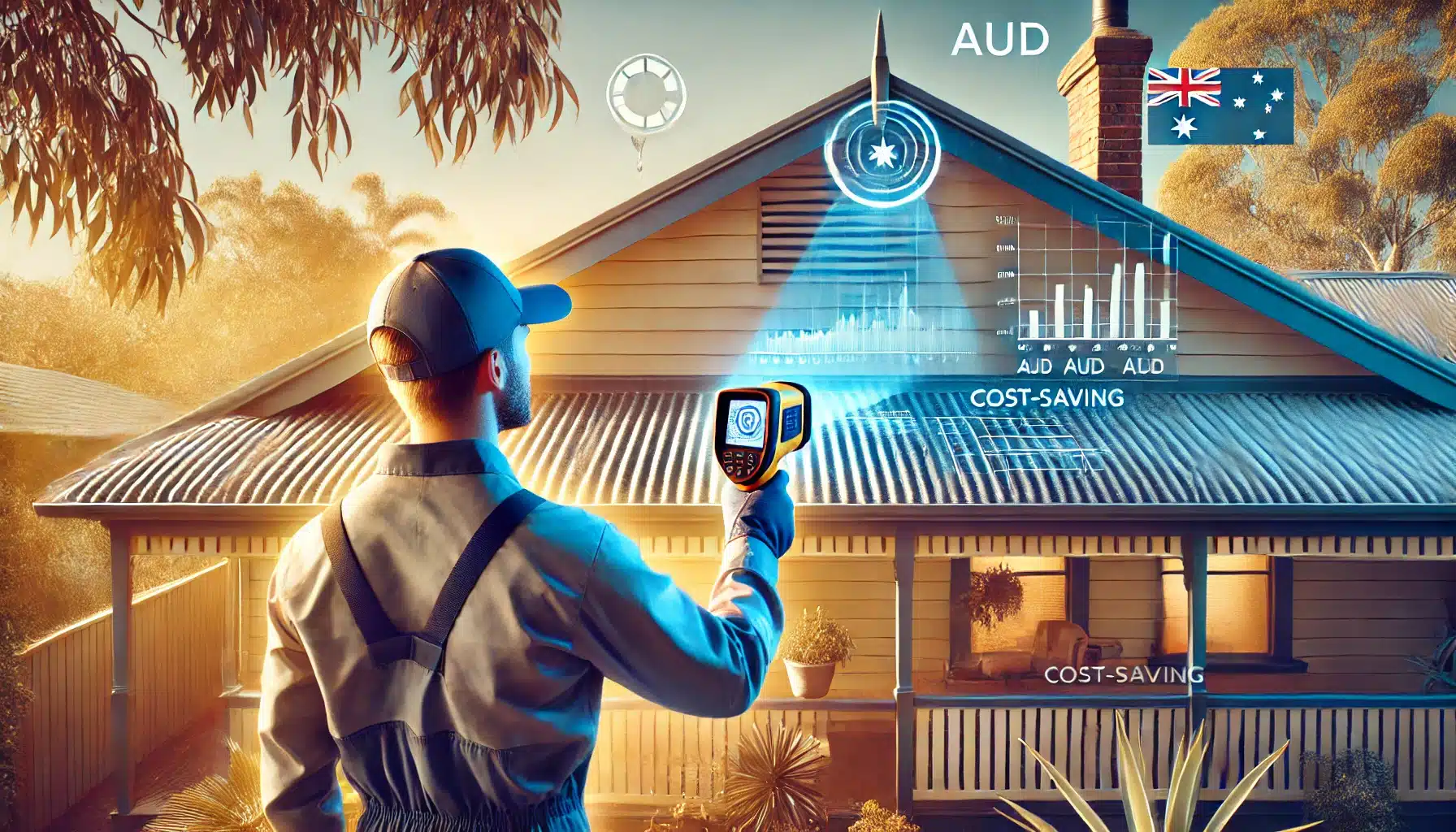
To receive your discount please fill in your details below.
It warms our hearts to see our valued HEROES being taken care off.






Is roof restoration better than roof replacement?
Often, the answer is a resounding yes! Roof restoration can be a more cost-effective and less disruptive alternative to replacing your entire roof.
If your roof is fundamentally sound but showing signs of wear, restoration can revitalize its appearance and functionality.
This process repairs the existing structure, addressing issues like leaks and cosmetic damage without the need for a complete overhaul.
However, there are some cases where a total replacement may be needed.
So, in this blog, we’ll be taking a closer look at these two methods with the aim of helping you make an informed decision for your Melbourne or Canberra home. Just keep reading!
Want Roofing Repairs In Canberra? Get in touch with us.
So, what exactly does roof restoration mean?
Think of it as a spa day for your roof! This process gives your existing roof a thorough makeover, fixing any damages and sprucing up its overall look.
The process includes cleaning, repairing broken tiles, sealing leaks, and applying a protective coating.
Unlike a full replacement, restoration focuses on enhancing what’s already there. It extends the life of your roof by addressing specific issues.
This method is efficient and cost-effective. It ensures your roof can continue to protect your home without the need for complete removal and replacement.
Now, let’s talk about roof replacement. This process involves completely stripping off your old roof and installing a new one from scratch.
It’s typically necessary when a roof is beyond repair – think severe structural damage or widespread decay.
Roof replacement can be quite extensive and usually more expensive, but it’s often the best choice for ensuring your home stays safe and sound for decades to come.
Now, how do you know which is the better option for you? Well, choosing between roof restoration and replacement depends on several key factors. Let’s take a quick look at some of them.
The age of your roof is crucial. If your roof is nearing the end of its expected lifespan, a replacement might be more cost-effective in the long run.
However, if it’s relatively new and mostly in good condition, restoration could extend its life without the need for immediate replacement.
Evaluate the damage. Minor issues like a few leaks or missing tiles are usually manageable with restoration.
But if you’re facing significant structural damage, such as major leaks, widespread mold, or underlayment failures, replacement may be necessary.
Budget is always a key consideration. Restoration is generally less expensive and can be a good interim solution if funds for a full replacement aren’t currently available.
However, investing in a new roof might save more money over time, particularly if extensive repairs are likely to keep cropping up.
Different roofing materials react differently to repairs and replacements. For instance, metal roofs and tiles are often excellent candidates for restoration, while shingle roofs might not be as resilient and could require replacement more frequently.
Consider how long you plan to stay in your home. If you’re planning to sell soon, a new roof might be a good selling point that increases property value.
If you’re staying put, then investing in a restoration could suffice for now, provided it ensures the roof remains reliable.
The cost of replacing your roof can vary widely, influenced by several factors including the size of your roof, the type of materials chosen, and the complexity of the installation.
Generally, a complete roof replacement can range from a few thousand to tens of thousands of dollars. For example, standard asphalt shingles are on the lower end of the cost spectrum, while premium materials like slate or metal might significantly increase the price.
The best time of year for roof replacement is typically during the late spring through early fall. During these months, the weather is generally more predictable and mild, which is ideal for roofing work.
Warm, dry conditions help ensure that installation goes smoothly and materials are set properly. Winter can be challenging due to cold temperatures and potential snow, while heavy rains in the spring can delay projects.
Maximizing the lifespan and efficiency of your roof involves regular maintenance and timely repairs. Start by scheduling annual inspections with a professional to catch and address minor issues before they escalate.
Ensure your gutters are cleaned regularly to prevent water buildup, which can lead to leaks and structural damage.
Consider adding insulation and proper ventilation in your attic. This not only helps regulate your home’s temperature, reducing energy costs but also prevents the buildup of ice dams in winter that can damage your roof.
Taking these proactive steps will ensure that your roof remains in peak condition, offering maximum protection and functionality for years to come.
When it comes to ensuring your roof is in top condition, don’t settle for anything less than the expertise of a trusted professional.
Whether you’re considering restoration or a full replacement, our team is equipped to provide you with the highest quality service.
We bring years of experience, top-tier materials, and a commitment to excellence that ensures your roof work is done right the first time.
Don’t let roof issues linger or worsen – contact us for Roof restoration In Melbourne or Roof Restoration In Canberra.



